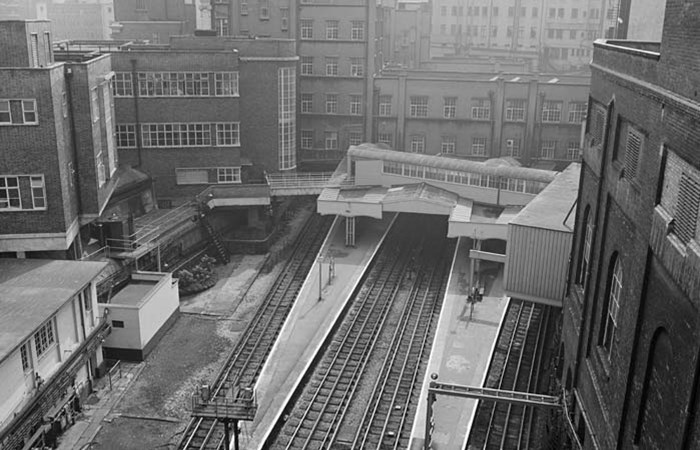I’m very pleased and grateful that it’s been possible to share the image of loco 15 in post 218. Thank you.
I apologise for the slightly larger lag in responding, as my two major interests for research and modelling are the Metropolitan Railway and trams and there have been two events of tram interest this weekend, both with very long journeys from home, so this message begins with an on-train draft. and therefore some supposition in the detail.
It is particularly useful to see another view of 15 from the Metropolitan era It provides a second source to confirm various detail variants and take a better look at the nameplate and its position. I may be wrong but I have a subjective impression that pictures of the south and west side of the locos are more available than of the other side and this is another one that makes the rule. The Metropolitan is a roughly NW-SE aligned railway route and best illumination of the subject may have been a common factor. The loco is facing in the direction its designers and operators intended and we can tell this from pictures because the bracket suspended from the middle area of the solebar is not precisely at the centre. Brake cylinders are in the restricted space of the underframe centre bay, acting by leverage on a common shaft that’s borne by these brackets, Vacuum cylinders, at the Country end, are larger than Westinghouse brake cylinders so the shaft axis and brackets are offset by design towards the Baker Street end.
On the corner area of the lower cab end panels nearest the photographer, there is a slight disruption of the pixels in the image, and I believe that’s because this is the place where the Metropolitan painted its coupling codes, too small and fine to come out in most images.
I feel there’s not enough evidence to confirm that the loco in the background whose number is partly obscured by the stowed lights on 15 is loco 5 – it’s just too small and incomplete to have an absolute view. The nameplate above does tell us that the loco in the background has a relatively short name, maybe no more than 12-13 characters including spaces within the string, as the main plate doesn’t extend very much outside the vertical beadings on the body’s side panels. Longer names had longer original plates. An aside on the stowed lights: As well as the three inbuilt marker lights, the locomotives had five cast lamp mountings on the footplate above the headstock The lamps, spigot-mounted in their sockets, appear to be stowed for convenience in the pair of sockets on the ‘Up’ side of the loco – sticking to Met. terminology. I believe the lamps are stowed because they are not facing front and where they are probably doesn’t imply a particular headcode, although there remain unanswered questions on the Metropolitan Railway’s headcodes.
I’m not sure I can add much than the books can say on the image in post 221 as it is post-1933 LT!. The books will say that four locomtives – 1, 3, 5 and 12 – were retained for shunting at depots and minor Engineer’s Train moves. One of the four depots was Ealing Common and their gifted locomotive was No. 12 [working from memory], so this was the origin of the long chain of events, via CME Test work, that made the operational life of Sarah Siddons so long and continuing. My guess is that it is a 1960s picture, and books and other clues may help a bit more with dating. There is something in the distance behind the locomotive and it is the profile of the sheds at Ealing Common Depot, East End and the locomotive and vehicles are standing on the Alps sidings. This is an area that I was very familiar with in my early career years. Few if any service trains were ever booked to leave from the Alps sidings, as far as I know, as the moves to exit would require shunts and there was adequate stabling and preparation in the sheds and yards. The Alps sidings instead tended to be – and still probably are – more likely to be used as storage space for less active vehicles, mostly for engineering, and also gave space to assemble trains or store trains in transit such as test trains. There have been all sorts of items in there, tube and surface, vehicles for scrap or for craning on and off lorries for moves or repairs, and Unimogs, and I remember an unusual road/rail shunter on solid urethane tyres being tested one day, moving a consist of every available vehicle that could be budged from around the sidings. Nevertheless, I don’t have perfect knowledge of what’s happened in there over time, but I can say that it has been one of the best places for stock variety on the railway. Today, there are fewer and shorter sidings as the Alps have been partially built on.





 However , at this distance in time I reckon a three year window is adequate!
However , at this distance in time I reckon a three year window is adequate!



